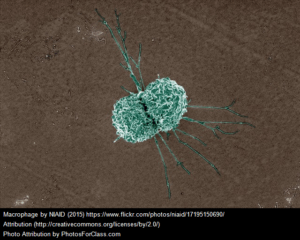The RICE principle.
You have probably heard about the RICE principle, or Rest, Ice, Compression and Elevation for treating sports injuries. But did you know that Icing and complete rest is no longer recommend? Instead we now use compression treatment and movement for getting injured athletes back in the game. As a competitive gymnast I sprained my ankle countless times, I was always told to rest and ice it to speed up recovery. However it turns out that icing injuries like that might actually delay healing. First a little bit of history, the standard practice of icing sport injuries is known as the RICE principle. It was coined in 1978 by Dr. Gabe Mirkin and has been the standard principle of acute sport injury treatment for decades. However as Dr. Mirkin himself writes on his website:
now it appears that both Ice and complete Rest may delay healing, instead of helping.
He now recommends using compression treatment, not resting for too long and avoiding immobilization, but for now I want to explain why we don’t want to ice for injuries.
Healing requires inflammation
The main reason we don’t want to ice is that healing requires inflammation. The response to both infection and tissue damage is the same. Inflammatory cells rush to injured tissue to start the healing process. The inflammatory cells called macrophages release a hormone called Insulin-like growth Factor (IGF-1) into the damaged tissues, which helps muscles and other injured parts to heal. However, applying ice to reduce swelling actually delays healing by preventing the body from releasing IGF-1. This means that, Ice Keeps Healing Cells from Entering Injured Tissue. Applying ice to injured tissue causes blood vessels near the injury to constrict and shut off the blood flow that brings in the healing cells of inflammation.

The blood vessels do not open again for many hours after the ice has been applied. This decreased blood flow can cause the tissue to die from decreased blood flow and can even cause permanent nerve damage. It is therefore important to remember that:
Anything That Reduces Inflammation Also Delays Healing
Anything that reduces your immune response will also delay muscle healing. Thus, healing is delayed by cortisone-type drugs, almost all pain-relieving medicines, such as non-steroidal anti-inflammatory drugs like ibuprofen, immune suppressants that are often used to treat arthritis, cancer or psoriasis, applying cold packs or ice, and anything else that blocks the immune response to injury. Ice also reduces strength, speed, endurance and coordination. The authors of a recent study recommend that if cooling was done at all, it should be done for less than five minutes, followed by progressive warming prior to returning to activity.
Dr. Mirkins Recommendations
If the injury is limited to muscles or other soft tissue, a doctor, trainer or coach may apply a compression bandage. Since applying ice to an injury has been shown to reduce pain, it is acceptable to cool an injured part for short periods soon after the injury occurs. You could apply the ice for up to 10 minutes, remove it for 20 minutes, and repeat the 10 minute application once or twice.
There is no reason to apply ice more than six hours after you have injured yourself. If the injury is severe, follow your doctor’s advice on rehabilitation. With minor injuries, you can usually begin rehabilitation the next day. You can move and use the injured part as long as the movement does not increase the pain and discomfort.
Get back to your sport as soon as you can do so without pain.
Take home message:
To sum up, if you experience a soft tissue injury. Use compression to help promote the inflammatory response, and help promote the release of IGF 1 into the injured tissues.
Try to avoid anti inflammatory drugs and painkillers, avoid using ice or use it only sparingly to manage the pain and svelling immediately after the injury – do not apply ice more than six hours after the injury. Keep moving, Wrap your joints with movement!
References
Read more on why ice actually delays healing on Dr. Mirkin, the inventor of the RICE principles, website: http://www.drmirkin.com/fitness/why-ice-delays-recovery.html


 Martin Kvist, Msc. Sport Science.
Martin Kvist, Msc. Sport Science.